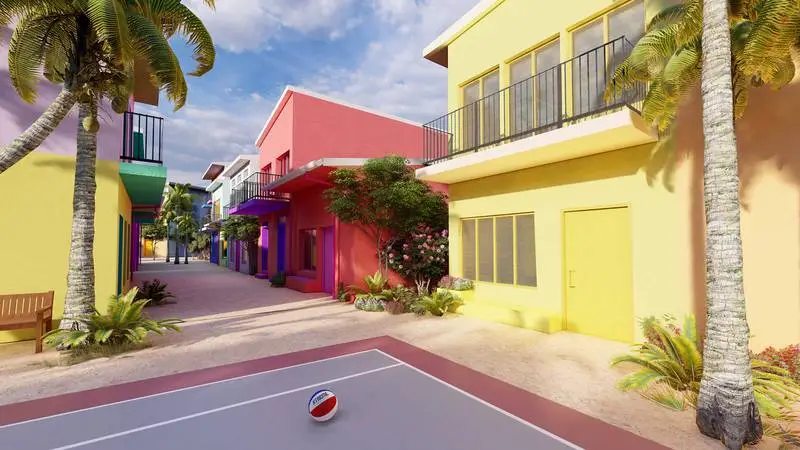Maldives to build one of the world's first floating cities as response to climate change
29 June, 2022

The Maldives will soon be home to one of the world’s first floating cities.
Set in a warm-water lagoon close to the capital, Male, the new district will feature thousands of waterfront residences built across a flexible, functional grid. Up to 20,000 people will inhabit the development, which will consist of a series of hexagonal-shaped floating structures.
Inspired by traditional Maldivian seafaring culture, Maldives Floating City will also eventually be home to hotels, restaurants, boutiques and a world-class marina.
The project has been under research since 2009 and is due to be fully completed by 2027. It was conceptualised by Dutch architecture firm Waterstudio, in partnership with the government of the Maldives and Netherlands-based developer Dutch Docklands. It is believed to be the first floating city in the world to be built as an island, with similar projects testing the waters in South Korea and the Netherlands. Smaller floating communities can also be seen around the globe from Peru to Vietnam.
Dubbed “a next-generation sea urban development" that can withstand rising sea levels, the island will be able to respond to the effects of climate change. It is particularly important given that 80 per cent of the Maldives sits less than one metre above sea level and it is predicted much of the archipelago will be uninhabitable by 2100 due to rising sea levels.
Safety and stability are key considerations when it comes to creating a floating structure of this size. “Forces of nature, waves, extreme weather and sea-level rise for a 100-year prediction must be engineered in advance,” reads the Waterstudio website.
“Rigidity versus flexibility and a mooring system that can divert all the extreme forces are the base of a floating city design. Single-structure city foundations act as huge mega ships, which have to handle enormous forces. By dividing the city in elements these forces can be handled in a more effective way with minimal risks.”
The design is inspired by brain coral, a type of marine organism that, due to its spherical shape and grooved surface, resembles a human brain. The project intentionally takes its design cues from nature and is respectful of its marine environment. Artificial coral banks will be attached to the underside of the floating city to stimulate natural coral growth. Meanwhile, submerged and protected coral reefs will provide a natural wave breaker.
“Maldives Floating City does not require any land reclamation, therefore has a minimal impact on the coral reefs,” explains Mohamed Nasheed, who was president of the Maldives from 2008 to 2012.
“What’s more, giant, new reefs will be grown to act as water breakers. Our adaption to climate change mustn’t destroy nature but work with it, as the Maldives Floating City proposes. In the Maldives we cannot stop the waves, but we can rise with them.”
The island is envisaged as a boating community, with canals acting as the primary transportation infrastructure and providing several access points. No cars will be allowed on the island’s white sandy roads — only bicycles and electric, noise-free buggies and scooters.
Sales of properties will begin soon and it is anticipated that the first residents will be able to move on to the island in 2024. Each residence will measure 100 square metres and have its own jetty and roof terrace. They will be priced from $250,000.
The project also offers “a world-class ownership structure that is transparent, value-driven and legally-binding”, according to Waterstudio, allowing international buyers to live here permanently.
Source: www.thenationalnews.com
TAG(s):
